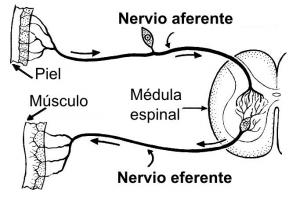Mammillary bodies: definition, location and functions
The human brain is made up of a set of organs, some of which are so small that it is not easy to recognize them with the naked eye. The mammillary bodies are one of these.
In this article we will see What are the mammillary bodies, what is their function in the brain? and how it relates to various parts of the brain.
- Related article: "Parts of the human brain (and functions)"
What are the mammillary bodies?
The mammillary bodies are a pair of small spherical brain structures that They are located in the limbic system, the part of the brain that is responsible for generating and regulating emotions.
Specifically, they are located in the fornix, also called trine, an area that connects the hippocampus (in charge of managing the storage and retrieval of memories) with the diencephalon, the latter being a structure located right in the center of the brain and responsible for many vitally important tasks.
Regarding the composition of the mammillary bodies themselves, consists of a group of neuronal nuclei
, that is, units in which different neurons are grouped together according to the tasks in which they participate (which, although they may be very similar, are distinguished in different aspects).- You may be interested: "Limbic system: the emotional part of the brain"
The connections of these areas of the brain
The mammillary bodies, being located in the cerebral trigone, are involved in mental processes associated with emotions and memory.
Specifically, the mammillary bodies receive nerve impulses from the amygdala, related to the regulation of hormonal levels and with intense emotional responses, and the hippocampus, which as we have already seen is a kind of directory of memories that are stored in other parts of the brain.
Specifically, the hippocampus works with memories belonging to the declarative memory, while the amygdala manages emotional memory, that is, the emotional content of memories.
On the other hand, the mammillary bodies send information to the thalamus, the largest brain structure of the diencephalon, responsible for integrating sensory information and generating immediate responses to certain stimuli.
But this should not be interpreted as a sign that the mammillary bodies act as a bridge between the hippocampus and the amygdala on the one hand and the thalamus on the other.
This would occur if the mammillary bodies were simply a stretch of white matter, that is, a part of the brain composed simply of neuronal axons (the part long of these nerve cells, responsible for sending nerve impulses to distant areas), but let us remember that their composition is based on the neuronal nuclei, that is say, Gray matter, areas in which neuronal cell bodies pile up and they are in almost direct contact with each other.
Thus, the mammillary bodies do not have a passive role in the brain, they are not limited to sending nervous signals to other areas, but rather they process that information and transform it. something else, even if it is only something slightly different and destined to blend with the tangle of nervous signals that ascend towards the upper part of the brain
- You may be interested: "Types of memory: how does the human brain store memories?"
What is your function?
At the moment little is known about the exact function of the mammillary bodies, among other things because they are so small that it is difficult to isolate its processes from others that are part of the global functioning of the system. trine. We only know the generic role it has by connecting areas involved with emotion and memory with the thalamus, which in turn is one of the most complex structures of our nervous system (for example, it has been attributed the function of being the "button" that turns on consciousness).
Therefore, it is necessary to continue researching to know exactly what the function of these tiny sets of neuronal nuclei is and to take into account that, perhaps, it is more It is useful to consider it not as something isolated but as part of a broader process carried out by the trine or even by the joint action of it and other parts of the trine. brain.
Associated brain injuries, and their effects
It has been seen that injuries to the mammillary bodies are often associated with Wernicke-Korsakoff syndrome.
As suggested by the connectivity of the mammillary bodies, among the most prominent symptoms of this syndrome are memory problems. Specifically, anterograde amnesia stands out, by which it is not possible or is very difficult to create new memories from what is experienced in the present.
Thus, the clinical cases of patients with this type of lesions suggest that the mammillary bodies are highly involved in memory. However, this region is also particularly damaged. in other diseases, such as Alzheimer's or schizophrenia.
The fact that each of these neurological or psychiatric conditions has a very wide range of symptoms and that it is not known whether a symptom is specifically due to damage in the mammillary bodies or lesions in other parts of the central nervous system mean that it is not clear what the specific function of this set of structures is. cerebral.

